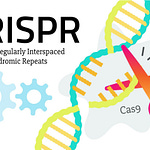Zero trust architecture (ZTA) or perimeterless security is a design and implementation strategy of IT systems. The principle is that users and devices should not be trusted by default, even if they are connected to a privileged network such as a corporate LAN and even if they were previously verified.
ZTA is implemented by establishing identity verification, validating device compliance prior to granting access, and ensuring least privilege access to only explicitly authorized resources. Most modern corporate networks consist of many interconnected zones, cloud services and infrastructure, connections to remote and mobile environments, and connections to non-conventional IT, such as IoT devices.
https://en.wikipedia.org/wiki/Zero_trust_architecture https://en.wikipedia.org/wiki/Biosecurity https://en.wikipedia.org/wiki/World_Health_Organization https://en.wikipedia.org/wiki/COVID-19_pandemic https://en.wikipedia.org/wiki/Molecular_communication https://en.wikipedia.org/wiki/Smartdust https://en.wikipedia.org/wiki/Real_ID_Act https://en.wikipedia.org/wiki/Polymerase_chain_reaction
How Zero Trust Works: At its core, Zero Trust security operates on a simple yet powerful principle: never trust, always verify. Unlike traditional security models that extend trust once inside the network perimeter, Zero Trust assumes that threats can exist both outside and inside the network.
This means that no entity, whether a user or a device, is trusted by default, even if it is within the network perimeter. Every access request is thoroughly authenticated, authorized, and encrypted in real-time, ensuring only the right people and devices have access to the right resources. https://www.mcafee.com/learn/what-is-zero-trust-security/











